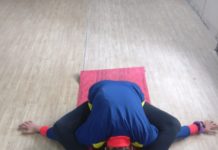Hypotension or low blood pressure is a condition when your arteries receive abnormally low blood flow. And as the blood pressure reduces, it can create a scarcity of blood reaching to the vital body organs including your brain. This leads to dizziness, light headiness, fainting and in chronic situations it can even lead to organ failures. It is detected when your blood pressure becomes lower than 90/60 (optimal is 120/80). If you have any of the symptoms stated above, you should get your blood pressure checked today and follow remedies to bring it. Yoga in this case helps the patients a lot to cope up with the various issues and also bring the B.P to normal state.
All the asanas related to Low B.P are designed in a way to increase the flow of blood in the heart. Initially it is done by asanas that is done voluntarily but as you go deeper into the practice, they build the pressure naturally. Due to this the pressure inside heart increases the blood flow and brings a balance.
SALAMBA SARVANGASANA
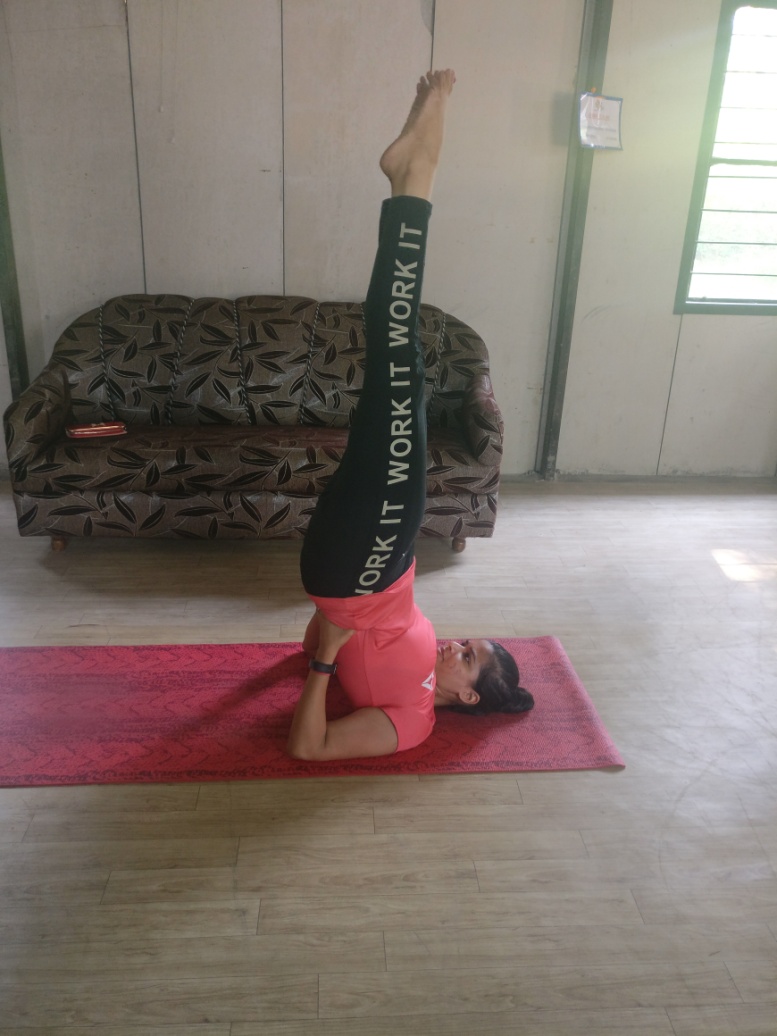
Sarvanagasana is called the mother of all asanas. Just like the mother nurtures and feeds us, this asana nourishes the internal organs and provide a harmony in them. In this asana the body is inverted, the venous blood flows to the heart without any strain by gravitational force. Salamba means supported, thus salamba sarvangasana means to do a supported sarvangasana.
Here are the steps to do Sarvangasana:
1. Lie flat on the mat with straight legs and arms besides your thighs.
2. Exhale, bend the knees and move the legs towards the chest, until the thighs start pressing the stomach. (like you do in pavanmukta asana)
3. Breathe few times and as you exhale raise your hips from the floor and rest hands on them.
4. Rest the hands by bending the elbows and squeezing the palms on your hips.
5. Now every time you exhale raise your trunk and bring it perpendicular to the mat.
6. Slide your palms and lower them to reach your lower back.
7. Go straight up until your chin gets locked to your chest.
8. Exhale and stretch the legs to make them straight with toes pointing up.
9. Hold the asana by taking deep breaths and maintaining the balance.
10. Hold this pose for as long as possible.
11. To come back to normal, slowly bend your knees, rest your toes gently down and remove your palms from the hips/lower back. 12. Remember to stay in Shavasana after completing the practice.
BENEFITS:
– Helps in bringing balance in hormonal system
– Increases blood supply in the body
– Helps in curing urinary problems
– If done while having cough and cold, one can mitigate the effects.
ADHO MUKH SVANASANA
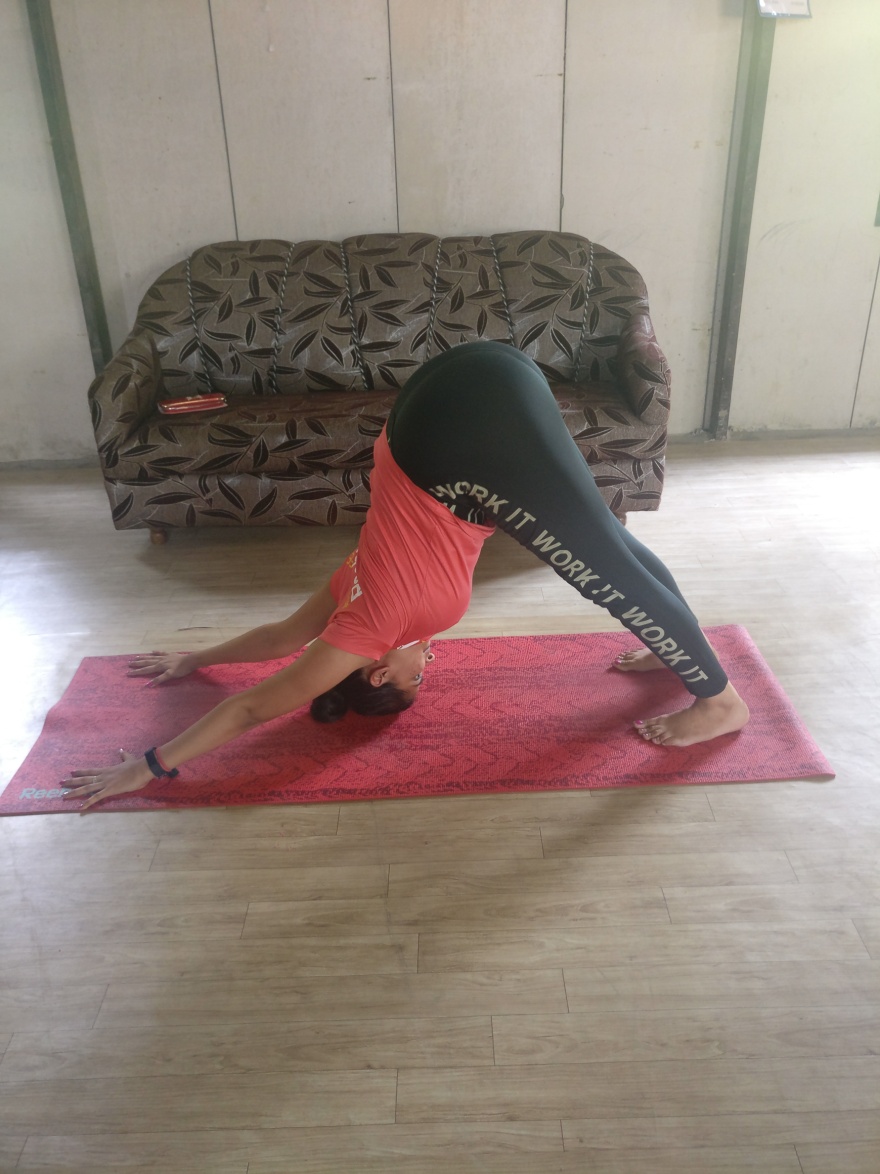
The word is derived from Adhas meaning ‘down’, mukha meaning ‘face’, the pose looks similar to a dog stretching forward and down.
Here are the steps to do Adho Mukh Svanasana:
1. Come in the plank pose and now exhale and pull your stomach in and push your hips up.
2. Slowly bring your feet closer to the hands.
3. Maintain a distance of 2-2/5 feet between hands and legs.
4. Now slowly take your head deep down by sinking down with the shoulders. You have to make an upside down ‘V’ with your body, where the fulcrum of the V is your hips.
5. Stay here for 15 seconds by keeping inhalation and exhalation deep.
BENEFITS:
- Calms down the sympathetic nervous system.
- Relaxes tired legs
- Good quick relaxation of overall body
- Stretches the hamstrings
- Opens the shoulder blade
- Improves digestion
MATSYASANA
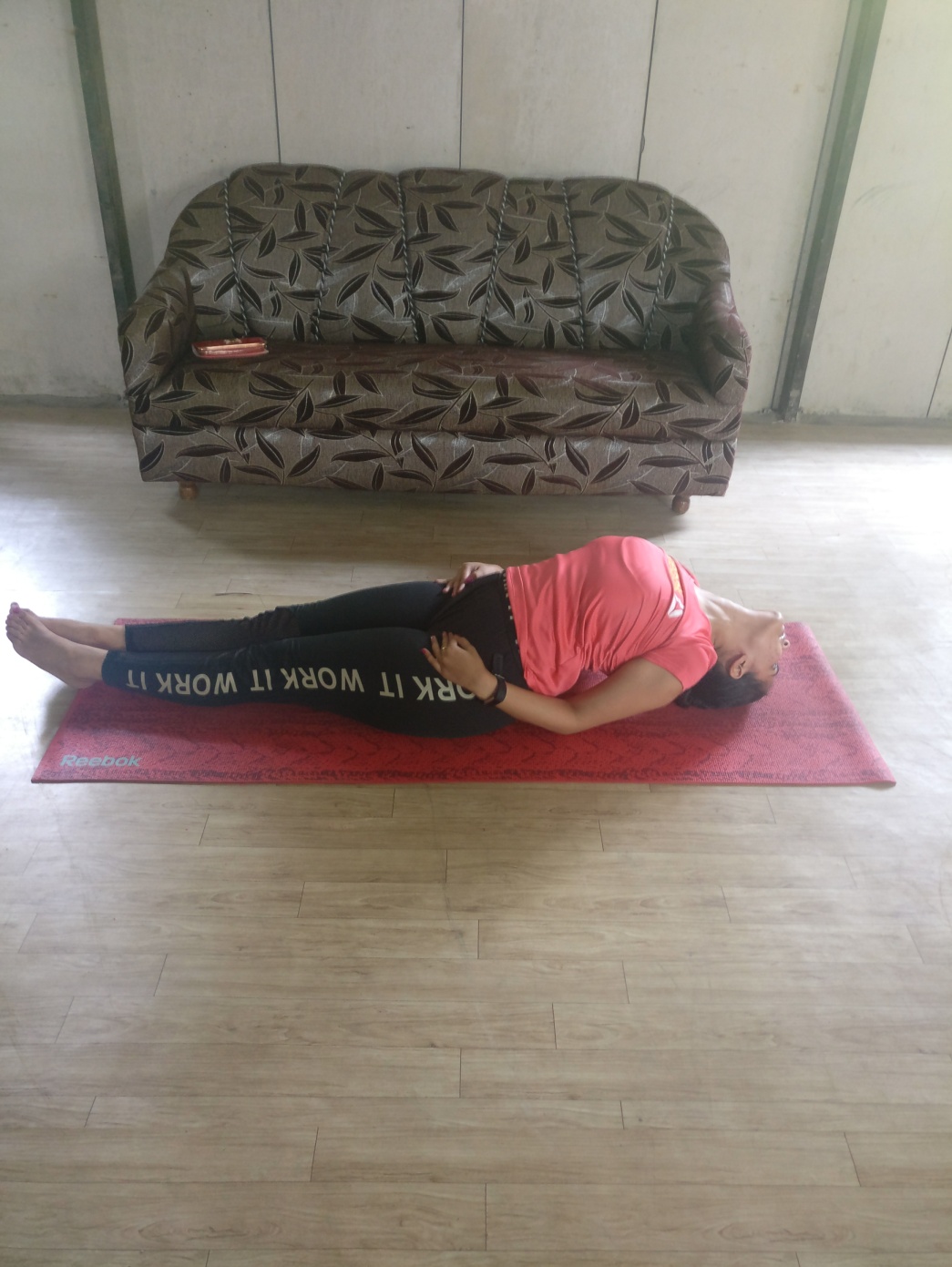
Matsya means fish. This pose is dedicated to Matsya the Fish Incarnation of Vishnu. It is said that when a massive flood was about to hit earth, Vishnu took the shape of a fish and saved Many, the human Adam. The fish carried the family of Manu on its back and also saved the sacred Vedas from getting destroyed. This asana gives the power to the body to get a strong back, neck and make the pelvic region flexible.
Here are the steps to do Matsyasana:
1. Lie down flat on the back and slowly take your palms on either side of the head.
2. The palms should face towards your feet.
3. Now shift the weight on your hands and slide the top of the head down while making an arch with your neck and chest.
4. Breathe for couple of times in this posture and after getting a comfortable balance, slowly release your hands and put them on the thighs.
5. Deep inhalation and exhalation will really help in getting into the asana and holding it for long.
6. If you are an advance level yogi you can put the lotus pose here and try to either hold the big toes or the knees.
7. To come back from this posture, take your hand near your head and slowly keep your head properly down. Release the padmasana and relax in shavasana for some time.
BENEFITS
- Since the asana increases the flow of blood in the head, chest and spine, it is very good for people with the issue of low blood pressure.
- Makes the breathing fuller, as the dorsal region is fully extended and chest is expanded.
- As the neck is well stretched, the thyroids benefit
- The pelvic joints become elasti
- This asana relieves the inflammation caused by piles.
SHASHANKASNA
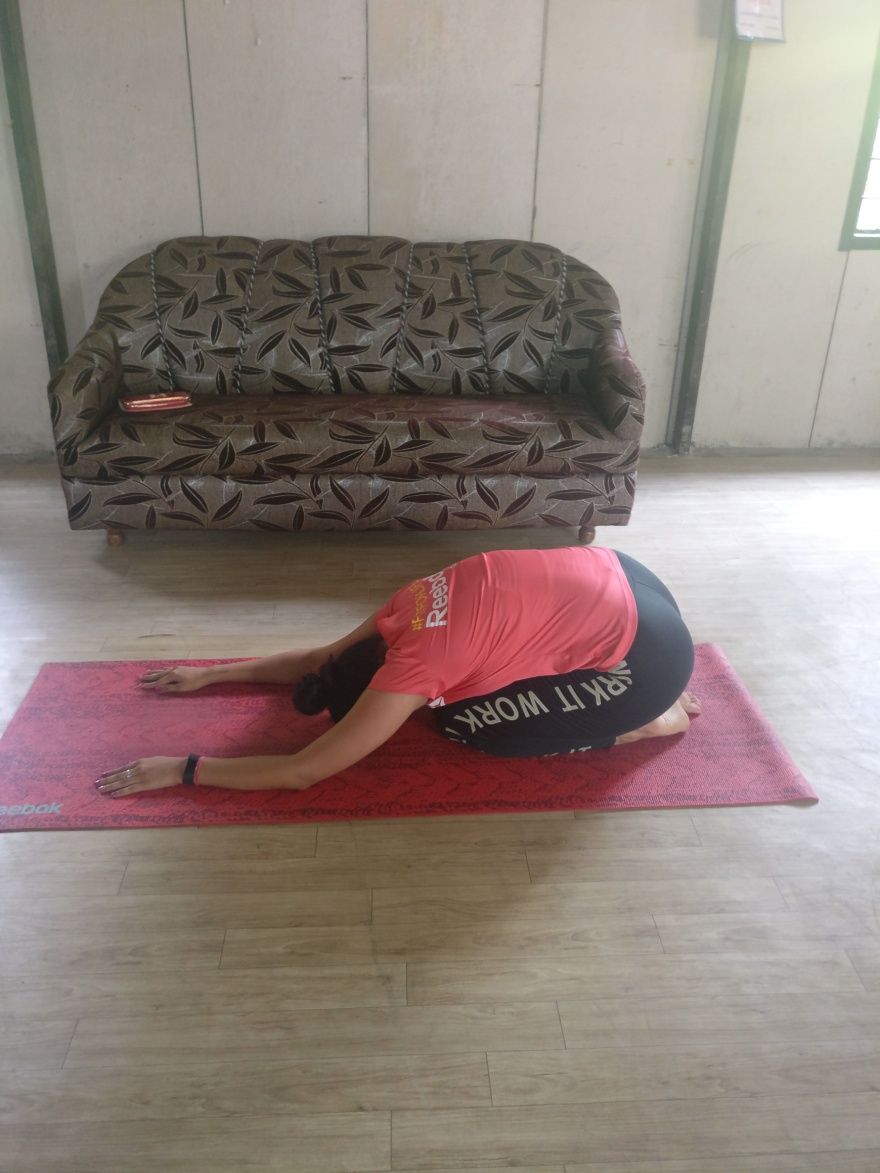
This pose is the best pose to activate your back or relax your head and breathing. It helps in decreasing the fatigue caused by stress in the body and eve in the mind. It is one of those asanas that has the ability to activate the anti stress system in our body that is the parasympathetic nervous system.
Here are the steps to do Shashankasana:
1. Sit in dandasana i.e sitting on your hips and taking the legs forward and straight.
2. Now inhale bend the right knee and exhale take it under the right hip, similarly do this with the other leg.
3. This position where you are sitting on your heels is called the Vajrasana.
4. Inhale and lift your hands parallel to each other and exhale bring them forward.
5. Now as you exhale deep, stretch your hand as forward as possible and touch the mat.
6. Try not to lift your hips up and extend your spine as forward as possible.
7. Now close your eyes and breath deep, focusing on your breath and body.
BENEFITS:
This asana helps in relieves fatigue and helps in bringing the blood flow to a normal speed.
PADHASTHANA
Pada means feet and Hastha means hands, this asana is all about touching your feet with your hands. It is one of the primary poses in yoga that are part of the Suryanamaskar! This asana gives the legs a great stretch and also increases the blood flow in the head which may slow down in low B.P.
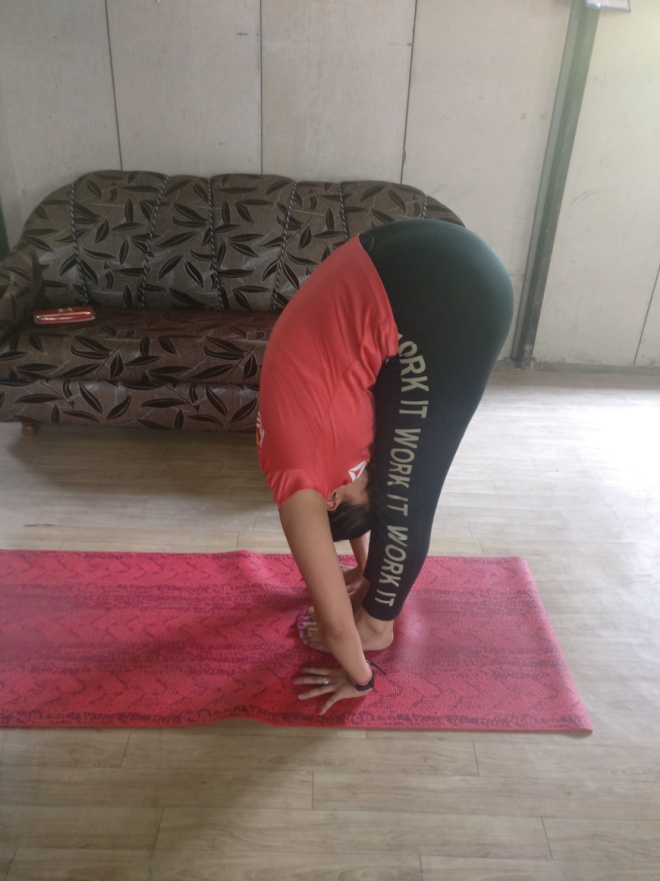
Here are the steps to do Padhasthasana:
1. Stand on the mat with feet together.
2. Inhale take your hands up
3. Go long with your back by extending the hands high up, stretching the inner thighs and the knees. This will erect the posture of the spine and legs and prepare you for the next step.
4. Now exhale slowly and reach with your palms forward by maintaining the back as straight as possible.
5. Pull the stomach in and make way for your head to touch down.
6. Try to go down as low as possible and touch your head on the legs. If you can’t reach down, breath again and as you exhale try to either hold the knees, shins or ankles. In this full coarse keep the legs straight and avoid making a hunch with your back.
Benefits:
• This asana tones the internal organs
• It increases digestive juices in the body
• Liver and spleen get activated in this asana
• In Padhasthasana, the Heart beat becomes slower and spinal nerves get rejuvenated
• It helps in curing displacement of disc and is great for making the posture better.
SURYABHEDI PRANAYAM
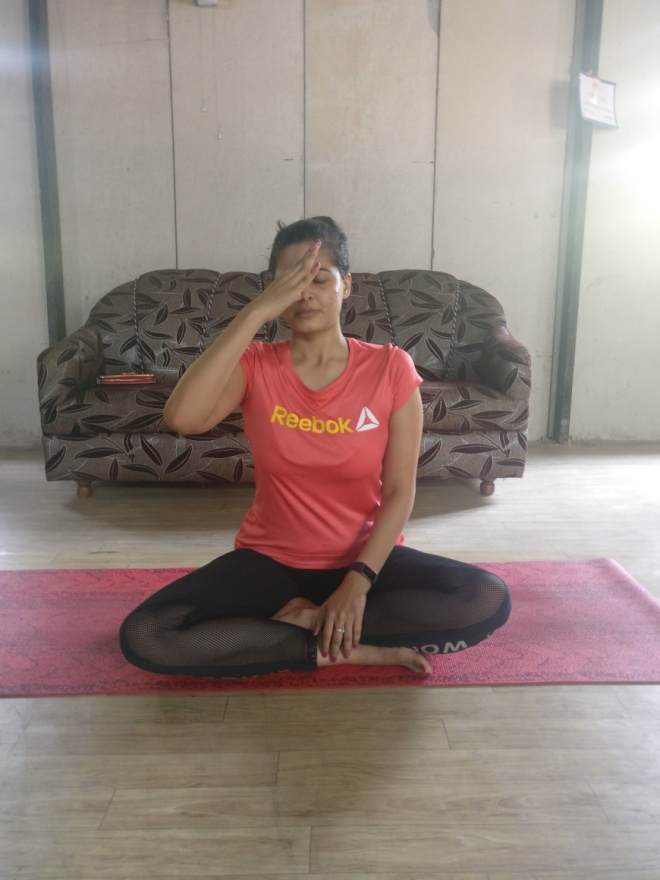
This pranayam is inspired by the warmth of the sun and increases the temperature of the body that is generally reduced due to low blood pressure.
Here are the steps to do Suryabhedi pranayam:
1. Sit in sukhasana/padmasana/vajrasana
2. Relax your back, shoulders and neck
3. Inhale slowly through the right nostril and fill up your lungs to maximum capacity.
4. Hold your breath for five counts.
5. Exhale through left nostril slowly.
6. Repeat this set five times initially then go for longer durations.
Benefits:
• Provides energy and warmth
• Purifies blood and increases digestion
• Reduces phlegm and increases bile
BHASTRIKA PRANAYAMA
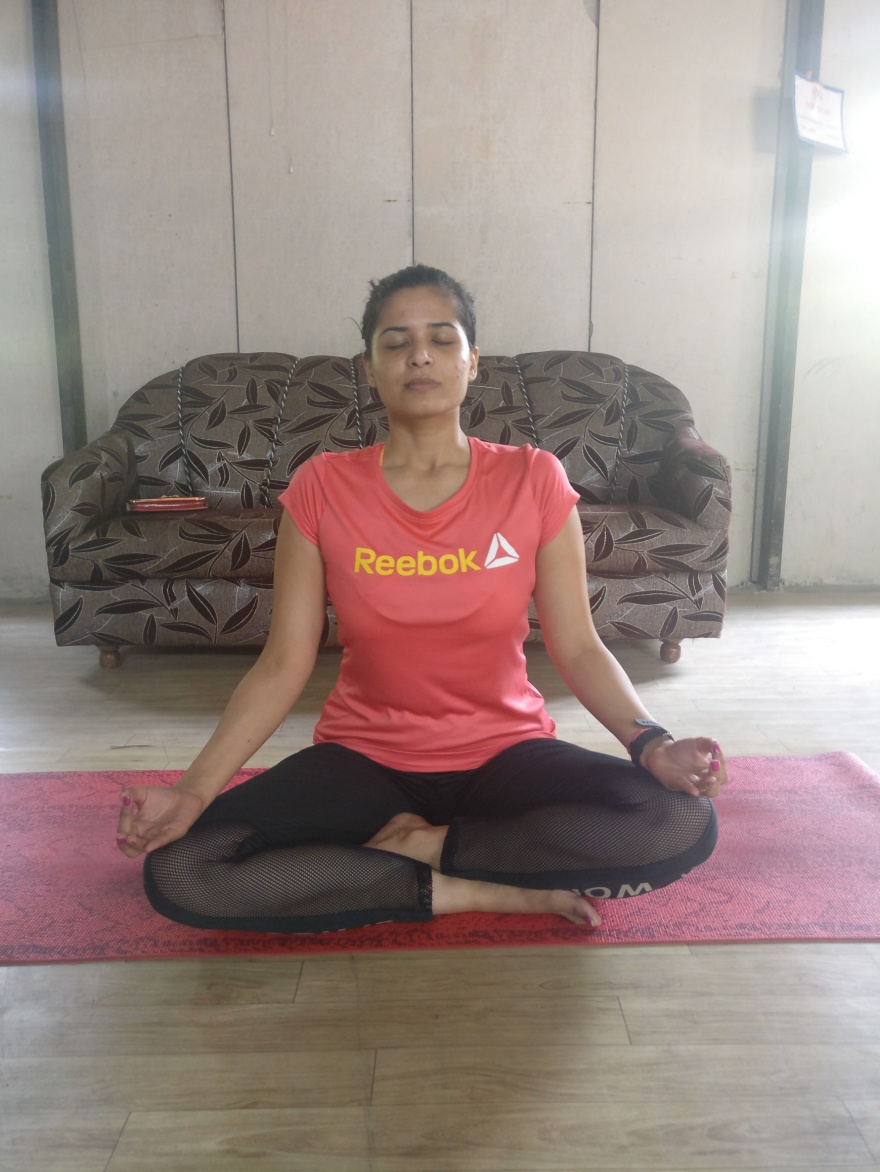
This pranayama helps to regulate breathing inhalation, retention and exhalation. It also purifies blood by ensuring that enough oxygen enters the system. It also relaxes the system.
Here are the steps to do Bhastrika pranayam:
1. Sit in sukhasana/padmasana/vajrasana
2. Relax your back, shoulders and neck
3. Inhale full with the force and now exhale out with the force.
4. Repeat it for 10-20 counts and then lie down in shavasana.
Benefits:
- This pranayama increases oxygen content in the body
- It removes any blockage in the nose and chest
- It removes appetite and digestion
- It is good for asthma patients and removes inflammation of the throat






















